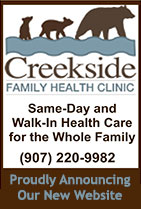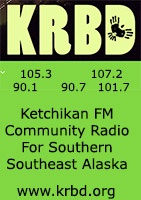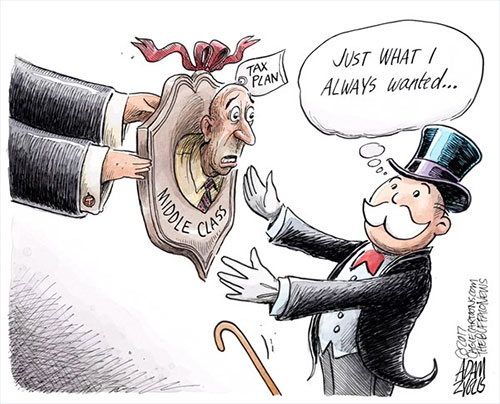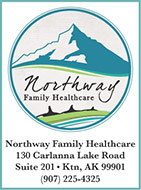






Weekly Specials
Online Shopping; Pickup or Delivery |
|










 Contact Contact 
 Webmail
Letters Webmail
Letters
 News Tips News Tips
 Copyright Info Copyright Info
 Archives Archives
Quick News
Search
 Alaska Alaska
 Ketchikan Ketchikan
 SE Alaska SE Alaska
Columns
- Articles
 Dave Kiffer Dave Kiffer
 Money Matters Money Matters
Historical
Ketchikan
 June Allen June Allen
 Dave
Kiffer Dave
Kiffer
 Louise
B. Harrington Louise
B. Harrington
Ketchikan
Arts & Events
 Ketchikan
Arts Ketchikan
Arts
 Ketchikan
Museums Ketchikan
Museums
 KTN Public
Library KTN Public
Library
Sports
 Ketchikan Links Ketchikan Links
Public Records
 FAA Accident Reports FAA Accident Reports
 NTSB
Accident Reports NTSB
Accident Reports
 Court Calendar Court Calendar
 Recent Filings & Case Dispositions Recent Filings & Case Dispositions
 Court Records Search Court Records Search
 Sex Offender Reg. Sex Offender Reg.
 Public Notices Public Notices
 AST Daily Dispatch AST Daily Dispatch
 KTN
Police Reports KTN
Police Reports
 Juneau Police Reports Juneau Police Reports
Weather,
Webcams
 Today's
Forecast Today's
Forecast
 KTN
Weather Data KTN
Weather Data
 AK
Weather Map AK
Weather Map
 AK Weathercams AK Weathercams
 AK Earthquakes AK Earthquakes

|
|

Monday
December 04, 2017

|
Southeast Alaska Sunset
Front Page Feature Photo By RYAN KELLY ©2017
|
|
Ketchikan: Ordinance for Healthcare Cost Transparency Urged by Ketchikan Chamber of Commerce - In a recent letter to the Ketchikan City Council, the Ketchikan Chamber of Commerce is urging the Mayor and Council to take action to adopt a healthcare transparency ordinance requiring healthcare practitioners to estimate charges upon request in a reasonable and timely manner.
The letter states that healthcare consumers, especially those with high-deductible plans, are increasingly seeking more information about the cost of health care procedures in the Ketchikan area.
Quoting the letter, "The Chamber believes that timely, transparent disclosure of healthcare costs is essential to protecting the interests of consumers, and allowing markets to function efficiently." According to the letters signed by Chelsea Goucher, President of the Ketchikan Chamber of Commerce, healthcare is currently the only industry in which consumers receive a service without being able to understand the price in advance.
Goucher wrote on behalf of the Chamber that many residents of the Ketchikan community have reported difficulties in obtaining information about the costs of healthcare services in a timely and predictable manner creating consumer frustration, uncertainty, billing disputes, and an increased tendency t6o seek medical services outside of the Ketchikan area -- none of which are in the best interest of local practitioners.
The Chamber's letter expressed support for the Municipality of Anchorage's Ordinance 2017-26 (as Amended) that taken a proactive approach to mitigate these issues by adopting an ordinance which requires healthcare practitioners to estimate charges upon request in a reasonable and timely manner.
The Anchorage Municipal Ordinance AO 2017-26 requires health care practitioners and facilities in Anchorage to provide cost estimates to patients who request such information. Upon request by a patient, and within 10 business days from receiving the request, AO 2017-26 requires health care practitioners and facilities, to provide a written or electronic estimate of reasonably anticipated health care charges to treat the patient’s condition when receiving nonemergency medical services. In addition, the ordinance requires health care practitioners and facilities to post a sign in patient waiting areas with specific language regarding requesting cost estimates. This ordinance does not require providers to publish price lists, or to determine their most commonly ordered services or procedures. However, if a State law is passed that requires this, then practitioners must comply with both State and Municipal laws. The ordinance does not apply to emergency services, and does not prohibit actual charges from differing from the estimate.
"The Chamber appreciates that some practitioners in the Ketchikan area may be willing to voluntarily improve their billing practices, the Chamber believes that is none-the-less in the best interest of the Ketchikan community's residents to adopt an ordinance mirroring Anchorage's. which treats all practitioners equally, and requires all practitioners to follow the same set of predictable, reliable guidelines," states the letter. - More...
Monday PM - December 04, 2017
|
|
Fish Factor: Tough Year in the Forecast For Alaska Fishermen By LAINE WELCH - It’s going to be a tough year for many Alaska fishermen.
Following on the heels of announcements of a massive drop in cod stocks, the industry learned last week that Pacific halibut catches are likely to drop by 20 percent next year, and the declines could continue for several years.
That could bring the coast wide catch for 2018, meaning from Oregon to British Columbia to the Bering Sea, to about 31 million pounds.
Scientists at the International Pacific Halibut Commission (IPHC) interim meeting in Seattle revealed that survey results showed halibut numbers were down 23 percent from last summer, and the total biomass (weight) dropped 10 percent. The surveys are done each year from May through September at nearly 1,500 stations from Oregon to the far reaches of the Bering Sea.
While the Pacific halibut catches have ticked up slightly over the past three years, indications of a fall back have been noted, said IPHC senior scientist Ian Stewart.
The biggest drop stems from a lack of younger fish entering the halibut fishery. Stewart said the 9 to 18 year old year classes that have been sustaining the recent halibut fishery are not being followed up by younger fish.
“In 2018, and especially projecting out to 2019, we are moving out of a fishery that is dominated by those relatively good recruitments starting in 1999 and extending to 2005. We see an increasing number of relatively poor recruitments stemming from at least 2009 and 2010,” he explained.
Although they are not factoring them into their halibut catch computations, scientists for the first time are looking closely at environmental and habitat conditions, as well as trends in other fisheries.
Stewart said warmer waters starting in 2007 appear to correspond to the lower halibut year classes. Most relevant to the drop in halibut recruitment in recent years, as with Pacific cod, are the effects of “the blob”.
“Especially through 2015 to 2016 we saw that warmer water extending even to deeper shelf waters in the Gulf of Alaska,” he explained. “We’ve seen a big increase the last several years in pyrosomes, which are these nasty gelatinous zooplankton, well documented sea bird die offs and whale strandings. So some abnormal things are going on in the Gulf.”
The IPHC does not always follow the recommendations of its scientists. Final decisions will be made at the annual meeting Jan. 22-26 in Portland, Oregon. - More...
Monday PM - December 04, 2017 |
Analysis: Two little-known ways GOP tax bill would make chasm between rich and poor even wider By DANIEL HEMEL - The tax bill passed by the Senate in the wee hours of Dec. 2 will – if it becomes law – widen the gap between the rich and the poor at a time when income inequality is already approaching historic heights.
Initially, most U.S. households are likely to experience a modest tax cut under the Senate plan. However by 2027, the average family earning less than US$50,000 would pay about $250 more in taxes under the Senate plan, while the average family earning more than $1 million would experience a tax cut topping $8,000 a year, according to estimates from Congress’s own Joint Committee on Taxation.
Yet even those stark statistics understate the full impact of the Senate bill on long-term inequality in the United States.
In my own research, I examine the relationship between the tax system and inequality. In my view, there are two significant reasons why the bill’s impact will be even more dramatic – and even more regressive – than the Joint Committee on Taxation’s estimates suggest.
Painful triggers
First, under a 2010 law known as the Statutory Pay-As-You-Go Act, or PAYGO, the revenue losses resulting from the Senate bill would trigger automatic cuts in federal spending.
The program that would be most affected by the automatic cuts is Medicare, whose budget would be slashed by more than $25 billion a year. Other programs that would experience deep cuts include vocational training for individuals with disabilities, block grants for foster care and Meals on Wheels and federal funding for historically black colleges and universities.
Because lower- and middle-income families rely more heavily on these programs than wealthier Americans, these spending cuts would amplify the regressive consequences of the tax-side changes.
In theory, Congress could forestall these cuts by passing legislation that waives the PAYGO law. But such legislation would require 60 votes to overcome a Senate filibuster, and it is far from clear that the votes in favor of waiver are there.
And in any event, a PAYGO waiver would not change the fact that the tax bill increases the federal deficit by more than $1.4 trillion over the next decade. Spending cuts to social safety net programs would likely have to come at some point, and when they do, lower- and middle-income families are likely to bear the brunt.
Broadly similar legislation passed by the House last month would trigger automatic cuts as well. Because the House bill violates Senate procedural rules, the final legislation is likely to resemble the Senate’s package more closely than the House’s version. - More...
Monday PM - December 04, 2017 |
 |
MONEY MATTERS: HOW TO TAKE THE FEAR AND PAIN OUT OF COLLEGE COSTS By MARY LYNNE DAHL, CFP® - Every fall parents of high school students all over the nation face the dreaded Free Application for Federal Student Aid (FAFSA) application. Currently applications are accepted from October 1 through June 30, 2018. The purpose of this application is to secure the best chance of getting financial aid for college and the early bird usually gets the worm. The FAFSA is a form used to determine how much, if any, a student may get in financial aid for college. It is the starting point for all types of grants, scholarships and financial aid programs throughout the entire US college system. Most high schools offer some basic assistance to parents or guardians who need help filling out the FAFSA form, but even with help, it can be daunting for many people. So much so that every now and then, we get requests from clients to assist them with the form and from this experience over many years, I can attest to the truth that this form is not easy to complete, but it is necessary. By the time you complete the FAFSA, you are definitely able to apply for financial aid in its various packages, and that is a good start to a college funding plan. For more information go to www.fafsa.ed.gov.
With this in mind, let’s review the choices available for college funding. The place to start is shortly after your child, or grandchild, is born.
On average, most students start college at about 18 years of age. Therefore, if you started a college funding plan at birth, you would have 18 years to accumulate enough money to pay for a 4 year degree. For example, a college fund that started with annual contributions of only $2,000 per year at the beginning of each year, for 18 years, with an average annual return of 6%, would be worth $65,520 by the time the student started his/her freshman year of college. Non-profit organizations that track college costs in the US say that the average cost for a public university, in-state resident student, is slightly under $10,000 per year currently. That is for tuition and books only; note that this does not include room, board and personal expenses like a car and clothing. Depending on how frugal the student is or is not, those expenses can double the cost for each year of college. - More...
Monday PM - December 04, 2017
TOM PURCELL: Charitable giving - It's an American Tradition - Ah, the giving season is upon us - the best time of the year to be an American.
According to Giving USA 2017: The Annual Report on Philanthropy for the Year 2016, American giving rose to $390 billion last year - a 3 percent increase over the prior year.
Americans give around 3 percent of our collective income to charity - more than the citizens of any other country. Better yet, these are individual Americans, not the government, who are generating the lion's share of the contributions.
According to the National Philanthropic Trust, the vast majority of U.S. citizens donate to charity - and 91 percent of high net-worth households do. Though most of the contributions come in small amounts, the average household contribution equals $2,520 - no small amount of generosity.
Giving USA says individual Americans gave an estimated $281.86 billion in 2016 - an increase of 3.9 percent over the prior year. Individual giving accounted for 72 percent of all charitable giving in 2016.
The balance of giving, some 28 percent, came from foundations ($59.28 billion), bequests ($30.36 billion) and corporations ($18.55 billion).
In 2016, the United States government gave about $40 billion in foreign aid to more than 100 countries - only about 10 percent of what our individuals and private organizations gave.
The fact is America is the most generous country on Earth, and most of the giving is coming from individuals sharing their hard-earned dough.
According to a 2006 report by journalist John Stossel, Americans give 3 1/2 times more, per capita, than the French, 7 times more than the Germans and 14 times more than the Italians. - More...
Monday PM - December 04, 2017 |

Political Cartoon: Government Handout
By Adam Zyglis ©2017, The Buffalo News
Distributed to subscribers for publication by Cagle Cartoons, Inc.
RE: Alaska's Fiscal Situation By David Nees - In a December 1 opinion piece Rep Ortiz opines that he is unfairly being accused of wanting to implement an income tax and has not done enough to cut spending. He then lays out exactly the same argument as the Walker administration with the inaccurate misleading cuts of 44% and huge loss of state jobs. - More...
Monday PM - December 04, 2017
Tax the Rich By Ken Leland - Jerry Cegelsky is right, after spending your lifetime building an estate through hard work and sacrifice, sometimes failing in your endeavors, but always keeping on that path to financial stability and security in your declining years, with health issues for yourself and your Family to deal with along the way, it's not an easy path, but you deal with it. - More...
Monday PM - December 04, 2017
Alaska's Fiscal Situation By Rep. Dan Ortiz - A misleading internet video posted around Thanksgiving alleged that I “want” to implement a state-wide income tax and that the State of Alaska continues to have a bloated budget. Neither of those statements are accurate. - More...
Friday AM - December 01, 2017
Trump Condones China's Press Restrictions By Donald Moskowitz - President Trump refused to take reporters questions during his visit to China. He succumbed to Chinese insistence that no questions be allowed from the press. - More...
Friday AM - December 01, 2017
Easy to take money from those who have sacrificed, planned and worked By Jerry Cegelske - Ghert Abbott's letter to Sitnews on November 21st stated that the solution to the Alaska fiscal problem is to heavily tax the investment income from the “rich” people. A problem I have with his solution is the government is the entity which defines the term “rich” or economically advantaged. It is easy for government to lower the definition of rich so that the numerous middle class and lower taxpayers end up paying the bill. Government has an unlimited power to take from people and an unlimited ability to spend more than they should. - More...
Monday PM - November 27, 2017
 |
The GOP’s Malevolent Tax Proposals By Ghert Abbott - It is impossible to fully convey the sheer, unbridled malevolence of the GOP tax plans currently being rushed through Congress. In order to pay for permanent corporate tax cuts which will predominately benefit the super-rich, working and middle class Americans will receive a permanent tax increase. At first this tax increase will be masked by temporary tax cuts, but once all the temporary cuts expire 50% of Americans will find themselves with a higher tax bill. These permanent tax increases will be particularly concentrated on households earning below $75,000 a year. The GOP’s tax plan will thus redistribute wealth upwards, increasing the tax burden of ordinary Americans while decreasing the taxes paid by the extremely wealthy. But the costs of paying for these corporate tax cuts won’t stop there. - More...
Monday PM - November 27, 2017
 |
Open Letter: Thank You By Alannah Hurley Dear Southeast Alaska Indigenous Transboundary Commission, On behalf of the United Tribes of Bristol Bay (UTBB), I would like to thank you for standing in unity with the people of Bristol Bay. The letter from your tribe urging the EPA to finalize protections for our watershed and Yup’ik, Dena’ina, and Alutiiq way of life is a great help to our efforts. Like many in your region, our tribal members still live a traditional way of life in balance with our pristine lands and waters. The health of our watershed is directly connected to the health and well-being of our people and the continuation of our cultures, we thank you again for helping us work to protect this connection for future generations. - More...
Monday PM - November 27, 2017
 |
“YOU WHO HATE” By David G Hanger - When next you choose to rant on a subject, Mr. Tim Livingston, I would suggest you at least understand what the subject is lest you again appear as stupid as you do in this instance. The term “plausible deniability” is technically a legal term for a method or action frequently used by extreme right-wing politicians in an effort to advance their agenda of lies, deceit, and ironclad control. In its more pedestrian utilization we have the denials and semi-denials of such as Menendez and Franken, but as refined political utility it is a right-wing phenomenon first developed by Goebbels, and more recently re- invigorated by the likes of Karl Rove. - More...
Monday PM - November 27, 2017
 |
The Republican Tax Plan: Tax Cuts for the Rich, Higher Medical Expenses for Everyone Else By Ghert Abbott - Just when we think we’re out, they pull us back in. The Republican Congress is launching yet another assault on the healthcare gains created by the Affordable Care Act, albeit one that is somewhat sneakier and less direct than the last five attempts. Instead of wholesale repeal of the ACA, Congressional Republicans are merely seeking to eliminate the individual mandate while also financially undermining Medicaid/Medicare and removing the medical expenses deduction from the tax code. By these methods Congressional Republicans hope to partly achieve the up till now frustrated goal of ACA repeal: gut healthcare and use the savings to give ever greater tax cuts to the super rich and large corporations. - More...
Tuesday PM - November 21, 2017
 |
The Reality of the Existence of God By Tim Livingston - For some, the presence of egregious acts of evil in the world convinces them it is impossible for there to be God. It is these same people who tend to classify moral lapses into two distinct categories, one reserved for those who commit the most abhorrent crimes, and the other for the rest of society who fail to honor the speed limit or merely cheat a little on their taxes. Their focus on the presence of the worst travesties allows them to assuage their own guilt when it comes to their ‘small’ wrongdoings which they believe pale in comparison to murder, rape, and other acts of violence. “It is the other guy who must be brought to justice and punished for his crime.” - More...
Tuesday PM - November 21, 2017
 Webmail your letter or Webmail your letter or
 Email Your Letter To: editor@sitnews.us Email Your Letter To: editor@sitnews.us
|
Articles &
photographs that appear in SitNews may be protected by copyright
and may not be reprinted or redistributed without written permission
from and payment of required fees to the proper sources.
E-mail your news &
photos to editor@sitnews.us
Photographers choosing to submit photographs for publication to SitNews are in doing so, granting their permission for publication and for archiving. SitNews does not sell photographs. All requests for purchasing a photograph will be emailed to the photographer.
|
|
















The Local Paper is
available online.
Click here for this week's printed edition (PDF)

|
|
|

![]() Contact
Contact ![]()
![]() Webmail
Letters
Webmail
Letters![]()
![]() News Tips
News Tips![]()
![]() Copyright Info
Copyright Info![]() Archives
Archives![]() Alaska
Alaska![]() Ketchikan
Ketchikan![]() SE Alaska
SE Alaska![]() Dave Kiffer
Dave Kiffer![]() Money Matters
Money Matters ![]() June Allen
June Allen![]() Dave
Kiffer
Dave
Kiffer![]() Louise
B. Harrington
Louise
B. Harrington![]() Ketchikan
Arts
Ketchikan
Arts![]() Ketchikan
Museums
Ketchikan
Museums![]() KTN Public
Library
KTN Public
Library![]() Ketchikan Links
Ketchikan Links![]() FAA Accident Reports
FAA Accident Reports ![]() NTSB
Accident Reports
NTSB
Accident Reports![]() Court Calendar
Court Calendar![]() Recent Filings & Case Dispositions
Recent Filings & Case Dispositions ![]() Court Records Search
Court Records Search![]() Sex Offender Reg.
Sex Offender Reg.![]() Public Notices
Public Notices![]() AST Daily Dispatch
AST Daily Dispatch![]() KTN
Police Reports
KTN
Police Reports![]() Juneau Police Reports
Juneau Police Reports ![]() Today's
Forecast
Today's
Forecast![]() KTN
Weather Data
KTN
Weather Data![]() AK
Weather Map
AK
Weather Map![]() AK Weathercams
AK Weathercams![]() AK Earthquakes
AK Earthquakes







































